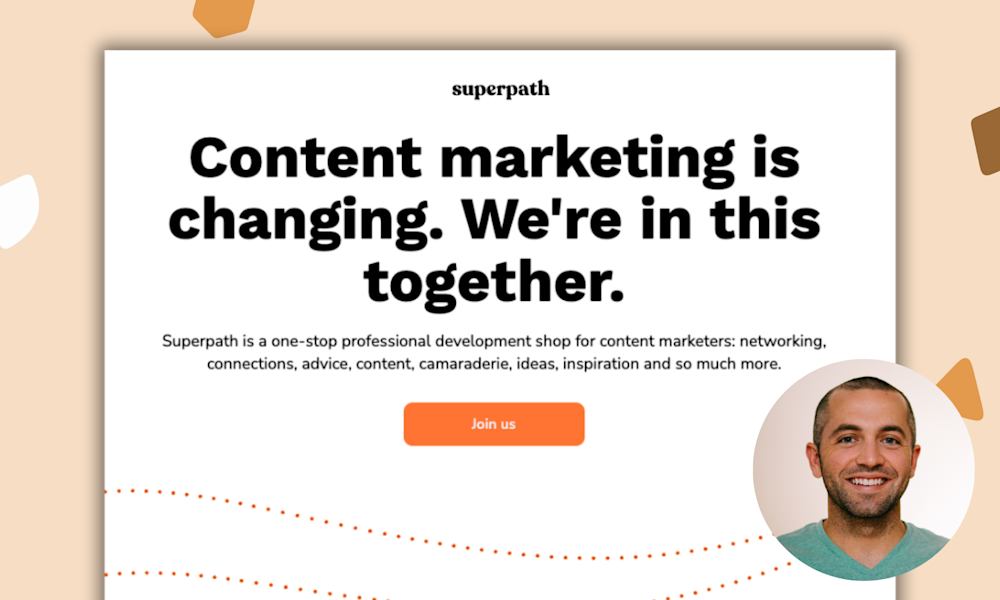What would happen if young children could lead their own education, exploring the world through creativity, imagination, and play?
When she realized that traditional learning methods weren’t always effective, early childhood educator Veronica Green set out to answer this question. And what she discovered changed everything.
Today, Veronica is an early childhood consultant and the founder of Cultivating Confidence, a business that helps educators plan engaging activities, understand student behaviors, and build deeper connections through creativity and play.
Her online courses, workshops, and resources are inspiring others in her profession and helping children get the support they need in the early years setting and beyond.
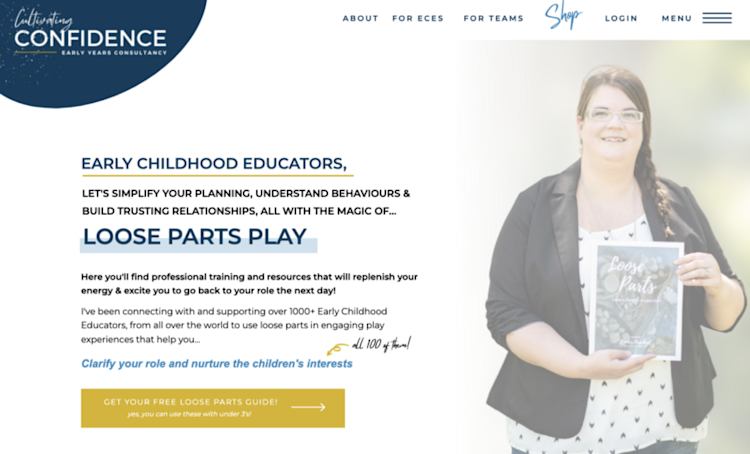
Here’s how Veronica leaned into her own experiences to become an industry leader, transforming the way we educate youngsters along the way.
“When I started learning more about loose parts play, I found my creativity again.”
Before Veronica began her creator journey, she was wearing many hats as an early childhood educator and mother to a son who is autistic.
She was running an accredited early childhood program out of her home and learning to navigate her son’s unique needs. Standard activities weren’t cutting it, so Veronica dove into the research to find solutions that worked for her students as well as her son.
This led Veronica to “loose parts play,” a child-led, play-based educational method where young children use unique everyday objects and their imagination to make sense of their world, problem solve, explore, invent, use divergent thinking, and, of course, have fun.
Veronica also learned about other child-led teaching approaches that put curiosity and exploration at the forefront.
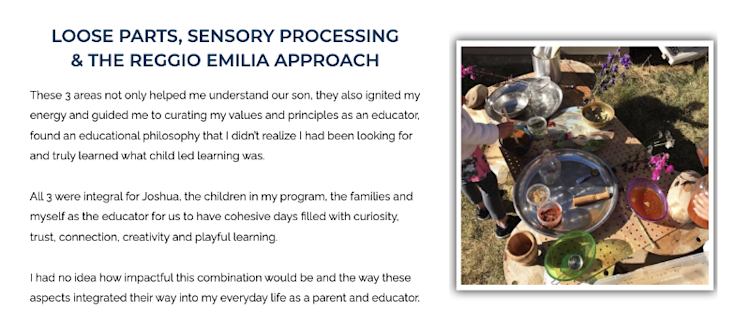
Her creative thinking, patience, and perseverance paid off. Veronica learned how to understand her son, his methods of communication, and his behaviors while simultaneously providing support to all the children in her care.
“Going through that really shaped who I am as an educator and as a person,” Veronica explains. “It allowed me to see the world differently with new perspectives.”
“My son is my biggest teacher, to see the world differently, to go against the grain…and have tons of fun along the way,” Veronica says on her website. “My son has taught me everything.”
Throughout her journey, Veronica candidly shared her experiences on social media, and other early childhood educators (ECEs) were drawn to her story.
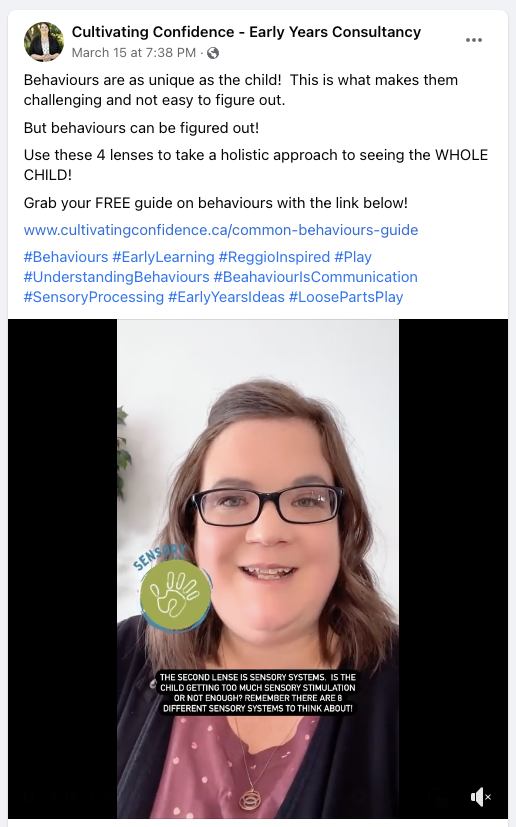
They appreciated her transparency and ability to create a fun, inclusive learning environment. She thought outside the box as an educator, and her students thrived. Her audience wanted to know more.
“When I started learning more about loose parts play, I found my creativity again…. It brought out my creativity in my own ECE role. I shared photos and the ‘whys’ behind what we were doing on social media, and other ECEs were drawn in and asked questions.”
Veronica knew that the educational strategies she was learning could help early childhood educators reach countless children, and she dreamed of one day sharing her experiences on a large scale.
Meanwhile, Veronica built a reputation as a trusted expert on social media. Other creators invited Veronica to host workshops and create course modules for their programs.
This planted the seed, and with an inspirational story and eager audience by her side, Veronica soon began creating digital products of her own.
“I wrote [my first course] off my phone in Starbucks at the end of my 10-hour days, and I still have it going.”
One of Veronica’s first products was an online course about sensory needs. In it, she shares research-based information and her personal experiences working with her son.
“I wrote [my first course] off my phone in Starbucks at the end of my 10-hour days, and I still have it going. It’s still the same format. I haven’t changed it. And people have been able to get a diagnosis and get the support that they need after taking it. That just touches me, and I’m very honored for that.”
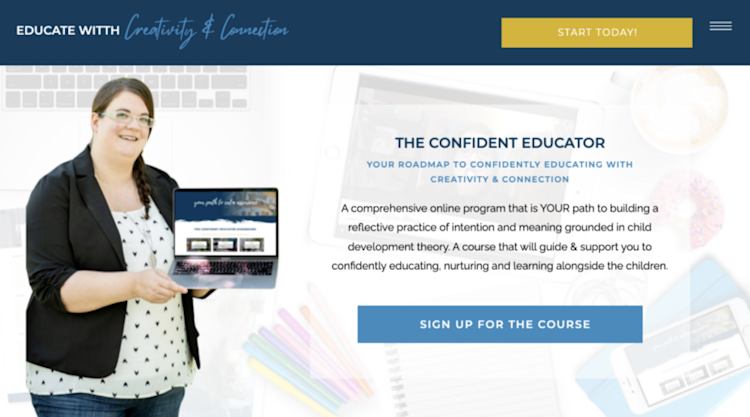
Veronica’s authenticity made her course stand out from others on the market. By showing the real ups and downs of her journey, Veronica helped other families and educators feel supported and encouraged.
She explains that early childhood educators often feel like they have to be “on” all the time and can’t show emotions. Her program includes a human element by discussing real challenges and how her family overcame them.
“A lot of it was sharing our journey. I’m very willing to share the good, the bad, and the not-so-great moments because that’s where we learned from,” Veronica explains.
In addition to her successful course, Veronica also offers live workshops that she repackages and sells as on-demand replays.

These workshops cover topics like implementing loose parts play and creating curiosity-driven spaces, which educators can use for their professional development.
For Veronica, teaching workshops in real-time makes her feel in her element.
“I like showing up live and teaching because I’m more in the moment. When I’m recording, I feel like I get too in my head, and I forget the words I’m saying…. But when I’m just talking on Zoom, on a workshop, I feel like I’m in the zone. I’ve got my notes. I’m good to go. So I feel like the content comes out better that way.”
Selling replays later is the icing on the cake: Veronica can earn passive income, and more educators can enjoy her valuable resources.
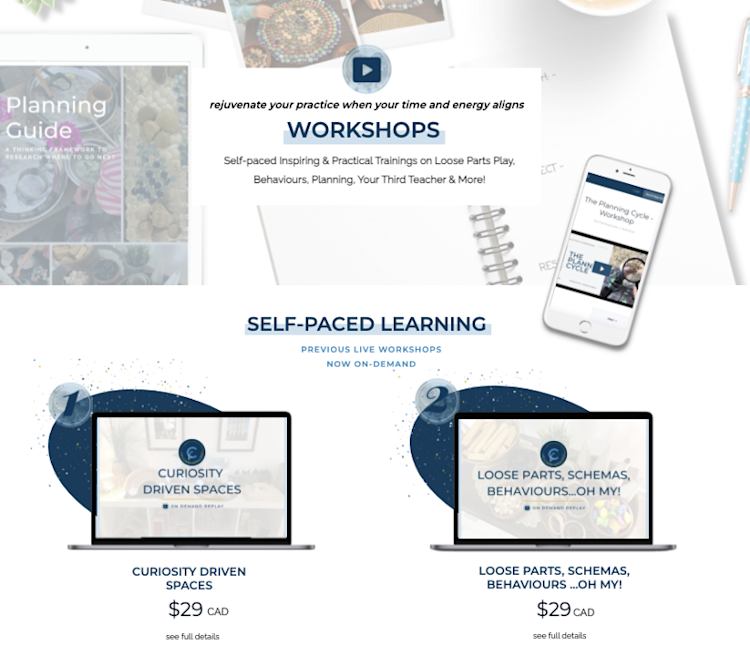
Up next, we’ll look at how Veronica uses Podia to run her business behind the scenes.
“[Podia] created more time for me to work on my business instead of problem-solving my business.”
Creators need a reliable place to handle the nuts and bolts of running a business. Podia lets Veronica simplify her tools, stay organized, and worry less about technical issues.
“I didn’t want to waste any more time figuring out how to sell something. [With Podia], I can just go in and make a product,” Veronica says.
Stylish branding across her website and Podia storefront was a big priority for Veronica. A seamless design makes the purchasing experience feel cohesive for customers.
Veronica creates this frictionless customer experience through Podia’s customizable site editor.
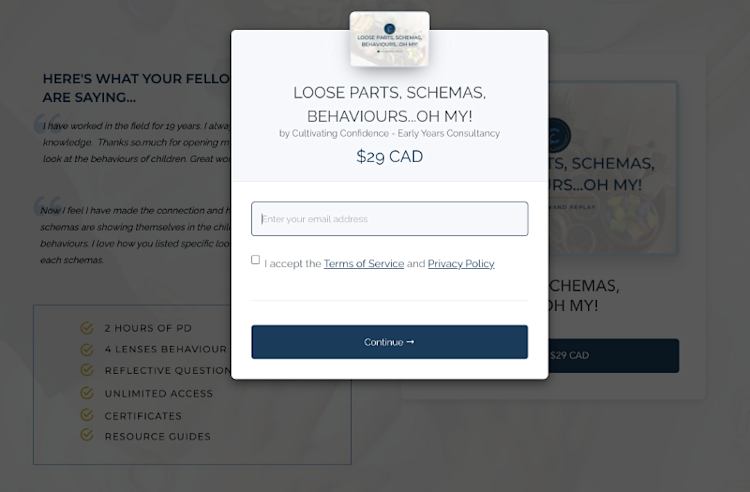
Educators can purchase Veronica’s Podia products directly on her website without switching applications. Then, when they sign in to enjoy their resources, Veronica’s Podia interface matches her branding for a harmonious, professional look.
“Customer experience is very important. I wanted [things to be easy]. [Early childhood educators are] tired. A lot of the time, ECEs have to do professional development on their own time. And a lot of the time, it’s unpaid. So it’s really important that it’s easy for them,” Veronica emphasizes.
“[Podia has] solved a lot of the big problems that I had tech-wise, and it created more time for me to work on my business instead of problem-solving my business. And that’s huge. I didn’t realize how much time I was spending on [troubleshooting] until I finally was able to move everything over.”
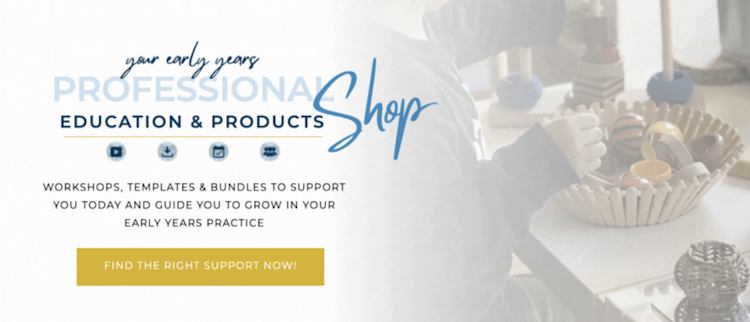
Additionally, Veronica feels like Podia gives her plenty of room to grow. With unlimited products, Veronica says she doesn’t see herself maxing out her plan any time soon.
Discover how Podia can help you grow your creator business — Try it for yourself with a free 30-day trial today.
Coming up, we’ll look at the different ways Veronica has found success in her business and her tips for aspiring creators.
“For the first three years in my business, it was just about creating content. Now I don’t need to make more. I need to optimize it.”
When it comes to content, Veronica has learned that more isn’t always better. She reminds creators that you don’t have to stay on the hamster wheel of constantly churning out new material.
“I feel like for the first three years in my business, it was just about creating content. Now I don’t need to make more. I need to optimize it. I need to repurpose it and… use it to actually help me gain more sales.”
For Veronica, it’s less about quantity and more about quality.
“I don’t feel like I should have 200 blog posts. That’s too many. Nobody’s going to see them. If I have a solid 30 to 50 pieces of content, that’s a lot. I can always go and update. I can change things… I use that to keep my creativity going.”
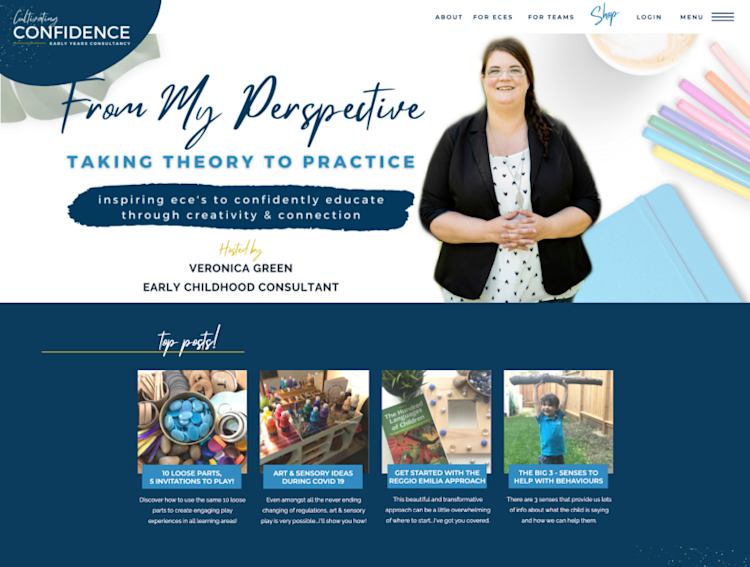
Instead of using your energy to produce a never-ending stream of new content, Veronica recommends a handy trick called content repurposing.
“I’m all about repurposing content. Always. Every video I’ve ever made…, it’s used to the max.”
Content repurposing is when you take one piece of creative work and transform it for various other mediums and channels.
For example, you could repurpose podcast episodes into audiograms for social media or videos for YouTube. You could also use the podcast transcript to create email newsletters or blog posts.
Veronica repurposes her weekly emails into social media posts and full-length articles. She also repurposes YouTube videos and written blog content into social media assets to get maximum reach.
“I’m all about repurposing content. Always. Every video I’ve ever made…, it’s used to the max,” she explains.
“I just created a YouTube video, and that video came from a text blog post that has done very well…. Now I just need to embed that video onto the blog. Then, I share stuff on social media about it. I take out clips, I take out quotes, I post the pictures, and I make carousels…. And then I email my list about it.”
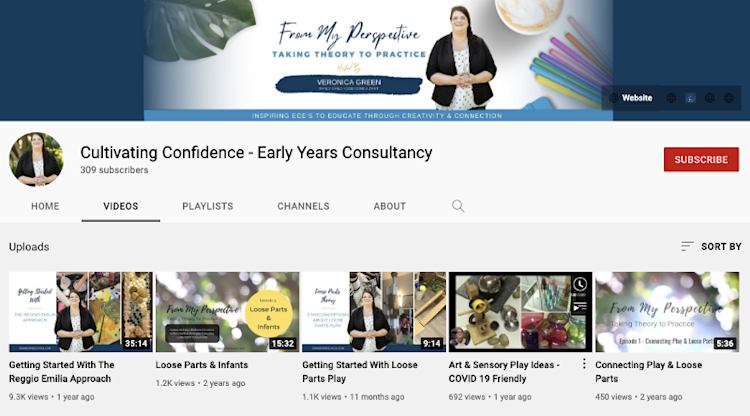
Veronica emphasizes that creators shouldn’t feel pressured to constantly create new content when they can often repurpose what they already have in inventive ways. By reformatting existing materials, you can work smarter, not harder.
“I know everybody in our digital world says you have got to make new content every week. I feel like, as a creative person, it’s too draining to do that. When I feel inspired to create something, it’s going to be awesome. But if I’m not inspired, it’s not going to be good. If I get one new video or blog post up a month, I’m okay with that.”
But there is one thing Veronica does every week, rain or shine: she sends a message to her email list.
“I’ve been consistent emailing every single week because I finally made it a priority over everything else, and that’s been huge.”
Building and nurturing her email list with valuable free content is a top priority for Veronica. Her free training programs and guides introduce fellow educators to her work, and her heartfelt weekly emails foster connections and trust.

Before launching her newsletter, Veronica already had a sizable following on Facebook, where she shared information about her early learning program and the discoveries she was making in her journey as an educator.
When she decided to start selling workshops, she observed how other business owners brought in new customers.
“They always seem to give away something for free, and that draws people in to get [their] email address. So I [decided] to create some sort of newsletter. I went to Canva. I created this PDF newsletter, and the day I announced that I was going to make it — I hadn’t even made it yet — the day that I announced it, I had 250 people sign up.”
It took Veronica an entire week to make her inaugural 7-page PDF newsletter, and by the time she was ready to press send, her email list had grown by another 250 subscribers.
Since then, word of mouth and social media have been huge growth drivers for Veronica’s list. She also offers several free lead magnets designed for her ideal audience.
A lead magnet is a free resource that addresses your followers’ pain points. It can be a free training, PDF, email course, ebook, or anything else that helps your audience reach a desired outcome.
Because people must sign up for your email list to obtain your lead magnet, everyone wins. Creators attract subscribers who are interested in their area of expertise, and individuals learn something new.
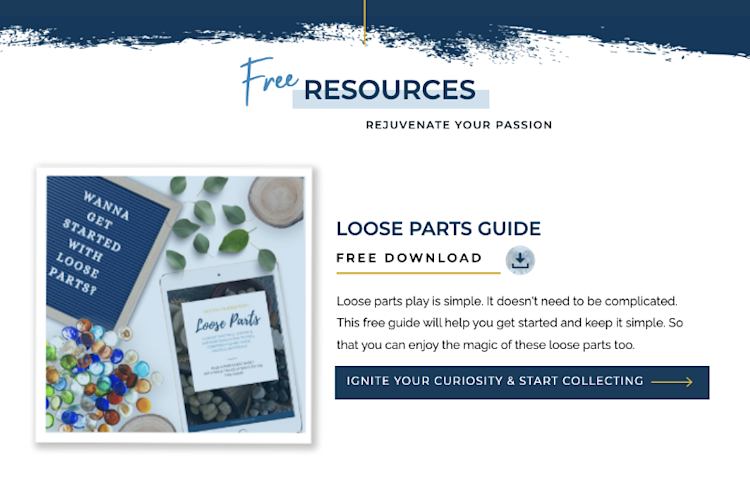
In the past year, Veronica has made it a priority to email her list every single week. She phased out her PDF newsletter and now simply writes from the heart.
“Now, I use [my weekly email] as my creative outlet. I sit down on Mondays to start my week off, and I write my Sunday email for the next week. I plan out what content I want to write, but I just write from me. That’s how I try to embrace my practice and work on my craft. I feel like it’s more authentic. It’s more me.”
Authenticity is at the core of Veronica’s work, and her weekly emails are no exception.
“Carve out space to work on your craft.”
One of Veronica’s biggest tips for success? Make time to practice your craft.
Don’t get so caught up in running your business that you forget why you started. Spend time enjoying the things you’re teaching and deepening your knowledge.
“Carve out that space to work on your craft, whatever it is,” Veronica advises. “When you start running a business, you don’t do your own craft very much. You spend most of your time running the business instead of getting to do it.”
Veronica uses her Monday email writing sessions to engage in her own practice and reconnect with her passion. This prevents burnout and keeps Veronica feeling excited about the meaningful work she’s doing.
Last but not least, Veronica emphasizes how important it is to follow your own path. Don’t let comparisons and outside opinions make you lose sight of your goals.
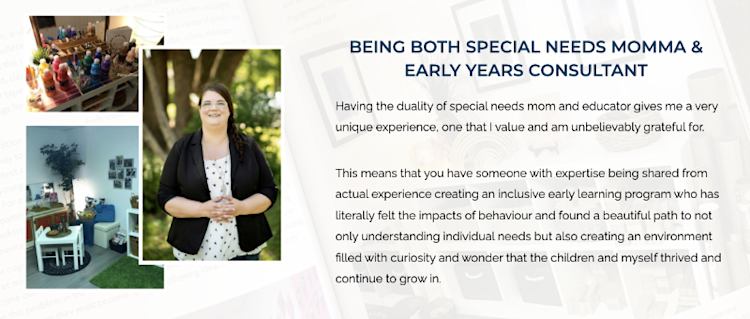
“Listen to what other people are talking about and sharing, but take it with a grain of salt,” she explains. “You don’t know everything that’s going on behind the scenes. You don’t know if they have a team of people. You don’t know how much money they have to put into marketing. You have no idea any of that. They’re only choosing to share a certain aspect of it, and you don’t know the full context.”
“That comparison can really slow you down and prevent you from moving forward. Listen to it. But ask yourself, how can I apply this to me? And don’t feel a need to copy it exactly the same, just because it worked for them.”
This circles back to Veronica’s advice about content creation and finding a workflow that works for your lifestyle.
When the digital marketing world said she needed to publish something new every week, Veronica tried it — but decided it wasn’t right for her business. In fact, she didn’t make any money because she spent all her time creating content.
Now, Veronica has honed her approach. She makes fewer pieces of content per month but never sacrifices quality. Everything she does focuses on driving more sales, growing her audience, and getting her work into the hands of amazing early childhood educators.
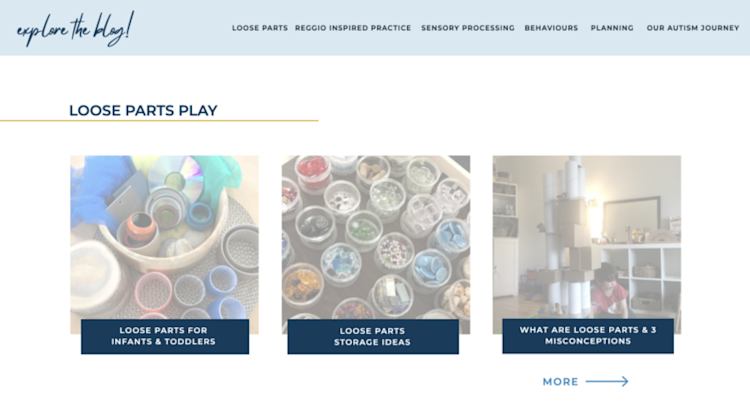
“It took me a long time to stop listening to everything people tell me to do. I lost my own voice through that,” she recalls.
“You have to figure out how to make this life work for you. Everybody has their own personal things going on. And everybody’s journey is so different. You will get there. You have to believe in yourself. You really, really do. You’re going to doubt it. You’re going to hate it. You’re getting ready to shut it down, but you just have to believe.”
Today, Veronica is making a significant impact on early childhood education by combining her professional knowledge with candid personal experiences.
She’s built her business on her own terms and focuses on quality over quantity, repurposing content, nurturing her email list, and carving out space to connect with her craft.
Veronica has already helped countless educators serve their students better, and we know she’s just getting started. We can’t wait to see where her creativity and passion take her next.
